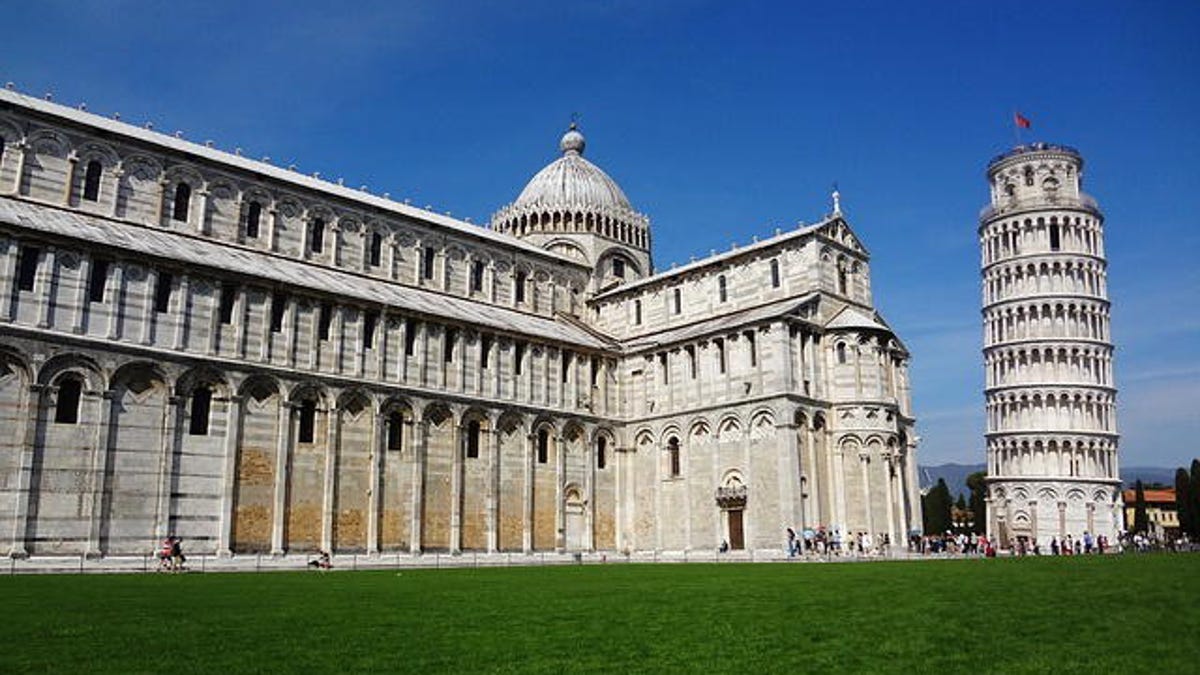This is how the Leaning Tower of Pisa defies earthquakes
Why hasn't a temblor toppled the tippy tower? A team of engineers figured it out.

The Pisa Cathedral and the Leaning Tower pose together.
The Leaning Tower of Pisa in Italy sure doesn't look like it should still be standing. The defiant 500-year-old architectural wonder should have been taken down by a major earthquake by now. Now a group of 16 engineers thinks it's solved the mystery of why it hasn't succumbed to a ground-shaking natural disaster.
The tower stands around 184 feet (56 meters) tall and leans at a dramatic angle thanks to the foundation sinking into the soft ground on one side. This architectural "whoops" has turned the structure into a must-see tourist attraction.
The University of Bristol says that there have been at least four strong earthquakes in the area since 1280 and that the building "was expected to sustain serious damage or even collapse because of moderate seismic activity."
The research team, led by architecture professor Camillo Nuti at Roma Tre University in Rome, says the tower's survival is due a phenomenon called "dynamic soil-structure interaction."
The soil around the foundation is soft, while the tower itself is considerably tall and stiff. The engineers say this combination modifies the vibrational characteristics of the structure so it doesn't resonate with the ground motion of an earthquake. It simply doesn't shake like a structure built on harder soil would.
The Incorporated Research Institutions for Seismology has a simple summary of resonance: "the number of seconds it takes for the building to naturally vibrate back and forth."
"Ironically, the very same soil that caused the leaning instability and brought the tower to the verge of collapse can be credited for helping it survive these seismic events," says University of Bristol engineer George Mylonakis.
The researchers will formally present their study results at an earthquake engineering conference in Greece next month.
Batteries Not Included: The CNET team reminds us why tech is cool.
Crowd Control: A crowdsourced science fiction novel written by CNET readers.

